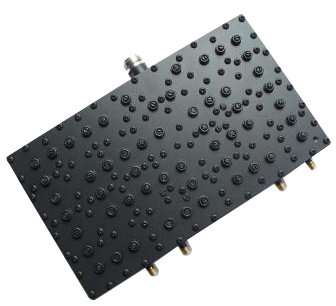4-way Power Divider
The Functionalities & Specifications Of 4-Way Power Dividers
In the world of radiofrequencies and signals, devices such as power splitters or combiners, which are commonly called “power dividers” play major roles. This device enables or allows radiofrequency power to be effectively split or combined. Here’s a brief, but educational and kind of layman’s look at the functionalities and specifications of 4-way power dividers.
The Two Broad Categories Of RF Power Dividers/Splitters
Before delving on the specifics of 4-way power dividers, let’s first take a quick look at the two broad categories of RF splitters or dividers, and these are “resistive” power splitters and hybrid power splitters. A “resistive” power divider (as the name implies) uses resistors, which allows them to maintain n the system’s characteristic impedance.
A hybrid power divider utilizes transformers, and is able to provide low loss levels And while there may be some physical loss in the transformer, the major loss seen in this divider arises from the splitting process, as the same signal is “shared” between a number of outputs.
Insertion Loss Facts
RF experts stress that when a power splitter or divider is inserted into a circuit, there will generally be some losses that result from the fact that no component or system is truly capable of incurring zero loss. However, the losses will generally be reduced or minimal, and may not be exactly computed.
However, electronics and communications experts agree that there will still be losses due to the fact that the signal is being divided in several outputs, however this could be described as not a loss, but a “division signal reduction”, as little or none of the signal is actually lost.
Generally, in power dividing applications, the input signal can be split from one to four (or even more) input signals, and no power is lost from this power split, but is instead allocated into the different amplitude and phase-matched signals.
The Basic Features & Uses Of Power Dividers
Ask any electronics and/or communications expert out there, and they’ll likely tell you that a power divider’s main feature is that they couple power that flows in one direction. This means that whether the power divider is one, two, three or four-way, the power entering the output port is coupled to the isolated port, but not to the coupled port.
A power splitter/combiner is utilized in a wide array of commercial, industrial and scientific applications. Among these include providing a signal sample for measurement or monitoring.
This device can also be used combining feeds to and from an antenna, for providing taps for cable-distributed systems like cable television, antenna beam forming, for providing feedback, and for separating transmitted and received signal on telephone lines.
Today, users will find a wide array of power splitters that are designed to be 2, 3, 4 or even 8-way dividers. Power dividers are also customized to fit or work in the octave band, multi-band, wideband or ultra-wideband, up to 40 gigahertz (GHz).
A typical 4-way power divider/splitter generally splits one signal, or combines four signals, with a nominal loss of 6 dB (estimated) and isolation provided between ports.

